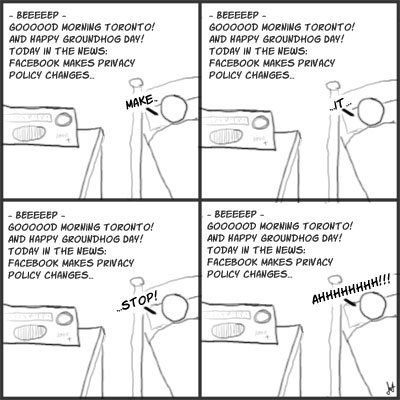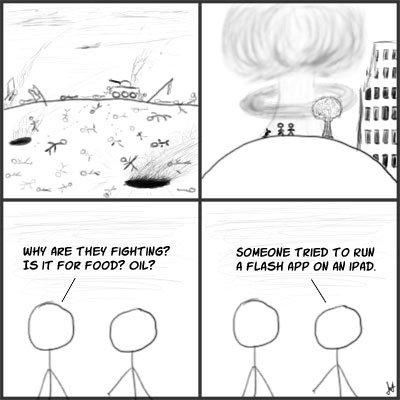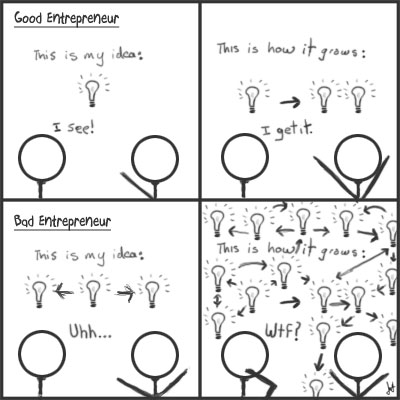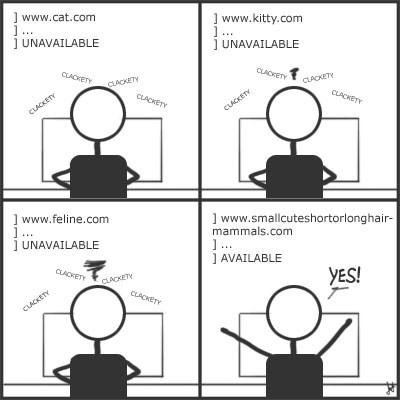The following tidbits of wisdom were hard-learned by me over 15 years of involvement with Web marketing and development:
Know what you don't know. When entering discussions with a Web services company, know what you don't know. Chances are you're a business person who knows their business very well. Don't push it. Leave such areas as technology, Web marketing, etc. to those who make it their business. Reciprocal respect in the early stages of a business venture between all parties involved will mean more listening, less babble, and a better planned project.
Beware the entrepreneur. The entrepreneur in question could be you. Entrepreneurs are people with a strong hands-on approach, and a clear vision of what they want. Sadly, sometimes clear vision comes with a pair of blinders. Be open to new ideas and directions for your Web project to avoid returning to the drawing board a year later to pay twice for work that should have been done up front. Be prepared to hear alternatives for the ideas you've constructed. It will save frustration and costs down the road.
Be aware of timing. It may be the right time for a Web site, but the wrong time to push for customer integration or large scale web marketing. Alternatively, it may not only be the right time to 'add' to your initial Web concepts, it may be foolish not to. Bounce ideas off your Web partners to help make sure your efforts are neither 'too big' nor 'too small'.
If you build it, they might not come at all. Don't create a Web entity on the off chance your customers will migrate to the platform on instinct. The Web is part of many businesses's day-to-day operations, but assuming your customers will use the tools you give them can be overly presumptuous. Understanding your customers habits, wants and business processes can save in planning and development costs.
Don't lead with technology, lead with business sense. Don't be suckered by flashy Web goodness. Video, slick graphics, bleeding edge Web technology is sometimes amazing but can also be of little value on business Web sites. Lead with an understanding of what your customers want, and give it to them with strong attention to simplicity and functionality. Its okay to look good for the party, but don't over-dress.
Know your vocabulary. When venturing onto the Web, make sure you speak the same language as your partners. Your vision of a 'portal' for example, is not necessarily anyone else's. Ensuring you and your partners speak the same language will heighten all parties' understanding of the project and its expected results.
Is something better than nothing? More often than not, the answer is no. Web users are notorious 'once bitten, twice shy' people. A poorly thought out Web tool can hurt your transition to Web business practices more than it will help. A focus group of potential Web customers or users will tell you more about your project's chance of success at both the planning and 'first draft' stages than any consultant will.
Your users will tell you what they want. If you give them the opportunity to – and that doesn't necessarily mean asking them. While a focus group, questionnaire or business lunch will give you amazing, and sometimes very straightforward information about what your users want, there are other ways to understand their needs. Close examination of their business processes, purchasing behaviors, interaction with support staff, and commentary in public forums (media, social media, Web forums, etc.) will yield many clues on how to create a Web success for your customers.
Many are greater than one. Placing yourself in your customer's shoes and examining your competitors and other aspects of the business community they find themselves in can yield information about what they will expect from the Web tools you build for them. Take advantage of the public nature of the internet to see what your customers see, and compare that vision to the entity you represent. How you fit, where, and the manner in which you fulfill a customer's needs can be influenced by understanding their virtual surroundings.
Don't create obstacles. Building barriers, restricting information, creating control structures, and other limitations on your customer's behavior on your Web site runs the risk of alienating them from the service you provide. Don't be your own worst enemy on the Web. Put your customer's needs first.
Have the resources. A poorly supported Web entity means that, over time, more and more customers will become disenchanted with it. Avoid the 'build once' mentality. No matter how much you and your partners prepare for your customer's business online, a year's worth of usage will yield new business needs and opportunities. Have the resources, both human and financial, available to address them and avoid stagnation.
Look within. Changing your customer's business practices and Web-enabling them means your company has to change and be prepared to support them. This means corporate change. Support your Web efforts with an inward eye closely watching human resource problems, business processes that bottleneck, etc. These are problems that will evolve over time, after your Web site launches – regardless of how prepared you were pre-launch.
Admit your mistakes. Sometimes you will be tempted to brush an internet tool or service under the rug and forget about as a costly mistake. Don't forget your customers are watching your every move on the Web. Sometimes admitting the shortfalls of a service will earn you respect from your customers where otherwise they might have ignored you in favor of a competitor. Having a plan for improvement or a clear path for your customers to follow as an alternative to the service you're no longer offering will also make for a better Web image.
© Jeremy Buehler and Rogue Tendencies (www.roguetendencies.com) 2010.
 Tomorrow I start my vacation in the wilds of Halifax, Nova Scotia, and it’s times like these that I think about one of my heroes, Lyle Simpson.
Tomorrow I start my vacation in the wilds of Halifax, Nova Scotia, and it’s times like these that I think about one of my heroes, Lyle Simpson. 
 You've probably heard about it: Google's Street View cars that drive around taking pictures for the service also logged open WiFi networks and occasionally nabbed unencrypted network data.
You've probably heard about it: Google's Street View cars that drive around taking pictures for the service also logged open WiFi networks and occasionally nabbed unencrypted network data.  I've been spending a lot of time lately thinking about how to make a social game fun, viral, non-predatory and liability-free. Here are a few of the things that got me headed down this path:
I've been spending a lot of time lately thinking about how to make a social game fun, viral, non-predatory and liability-free. Here are a few of the things that got me headed down this path:

 What a week!
What a week! After watching the
After watching the  After reading
After reading  I recently saw a story about some university students who made a
I recently saw a story about some university students who made a 
 I've mentioned before
I've mentioned before  I wanted to call this post "Knowing When to Not Listen To Anyone" but I thought it was too negative so I went with "Why Iterative Development is Awesome".
I wanted to call this post "Knowing When to Not Listen To Anyone" but I thought it was too negative so I went with "Why Iterative Development is Awesome".  Caught
Caught  Looking back at my time as a community manager got me thinking about how not everyone is cut out for the job. That's not self-flattery; I feel some people's personalities would have trouble adjusting to the highly social and sometimes volatile nature of it. That got me thinking about what personality traits I see are important for a good community manager:
Looking back at my time as a community manager got me thinking about how not everyone is cut out for the job. That's not self-flattery; I feel some people's personalities would have trouble adjusting to the highly social and sometimes volatile nature of it. That got me thinking about what personality traits I see are important for a good community manager:
 I recently heard a comment that social marketing is a bubble. The term implies that sooner or later everyone will conclude social marketing is significantly over-valued, and soon after there will be a social marketing 'crash' with far reaching effects.
I recently heard a comment that social marketing is a bubble. The term implies that sooner or later everyone will conclude social marketing is significantly over-valued, and soon after there will be a social marketing 'crash' with far reaching effects. Social game developers are faced with a number of platforms to choose from on which to build their products. But what platform should they choose? The greedy answer is 'all of them'. The larger exposure your application has to various audiences on various platforms, the larger the opportunity for revenue in the long run.
Social game developers are faced with a number of platforms to choose from on which to build their products. But what platform should they choose? The greedy answer is 'all of them'. The larger exposure your application has to various audiences on various platforms, the larger the opportunity for revenue in the long run. I like reading feel-good technology stories. They bring out the best of the geek in me. Here are three of my favorites from the last 48 hours:
I like reading feel-good technology stories. They bring out the best of the geek in me. Here are three of my favorites from the last 48 hours: I cringe whenever I hear someone new to social marketing say they are eager to pursue it because it is 'cheap'. The five hot spots listed here should make any check-signer pause, because failure to contemplate their associated costs will result in a low return on any investment made.
I cringe whenever I hear someone new to social marketing say they are eager to pursue it because it is 'cheap'. The five hot spots listed here should make any check-signer pause, because failure to contemplate their associated costs will result in a low return on any investment made. 
 All social game designers face the challenge of monetizing their games. The problem they face is this: Providing premium entertainment does not by itself guarantee revenue, especially in a world where customers are reluctant to pay large sums of money for a product, and a precedence for free product exists.
All social game designers face the challenge of monetizing their games. The problem they face is this: Providing premium entertainment does not by itself guarantee revenue, especially in a world where customers are reluctant to pay large sums of money for a product, and a precedence for free product exists.




